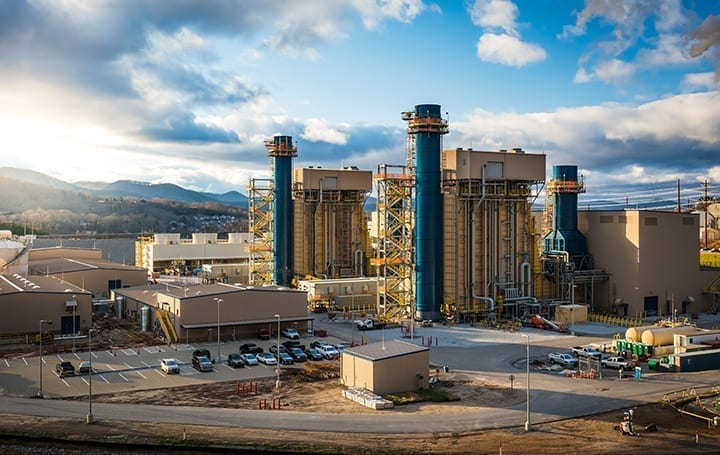Duke Energy Has New CCGT Plant in Asheville
Duke Energy Progress, the Duke Energy subsidiary that serves about 1.6 million customers in the Carolinas, announced the completion of its new Asheville Combined Cycle Station in Arden, North Carolina.
The company said the $817 million combined cycle gas turbine (CCGT) facility (Figure 1) includes two power blocks with a total of four generators and more than 18,000 components. The first 280-MW unit came online in December 2019, and the second similar unit became fully operational in April.

In late January, Duke Energy retired a 1960s-era coal-fired unit at the Asheville site. Demolition of that plant is underway, with completion expected in 2023. The company said emissions from the site have declined significantly as a result of the transition from coal to natural gas. SO2 is expected to decrease by 99%, NOx by 40%, CO2 by 60%, and mercury has been completely eliminated.
“Customers want cleaner, more reliable energy, and we’re committed to delivering on this expectation,” Kevin Murray, Duke Energy’s vice president of project management and construction, said in a statement. “By building the new Asheville station, we’re significantly reducing air emissions—including carbon dioxide, sulfur dioxide and nitrogen oxides—and continuing to move toward our companywide goal of cutting carbon dioxide emissions by 50% by 2030.”
The Asheville Combined Cycle Station is said to be Duke Energy’s most efficient plant in the Carolinas. The company claims it’s 75% more efficient than the retired coal plant it replaced. It also requires less manpower to operate. Only about 30 employees—many of whom had previously worked at the retired coal plant—are needed to operate and maintain the facility.
Duke Energy said it is investing in several other projects in the Asheville region. The company will build a 9-MW to 10-MW solar plant and a 17-MW to 18-MW battery storage facility at the Asheville station after the coal plant is demolished. It’s also connecting a 9-MW lithium-ion battery facility to the Rock Hill substation in the city of Asheville.
Power lines, electrical substations, and other infrastructure to get power from plants to customers in western North Carolina have also been upgraded, and a microgrid including a 2-MW solar installation and a 4-MW lithium-ion battery storage system was approved last May for construction in Hot Springs. Duke Energy said the infrastructure upgrades and renewable energy investments together totaled more than $295 million.
—Aaron Larson is POWER’s executive editor (@AaronL_Power, @POWERmagazine).